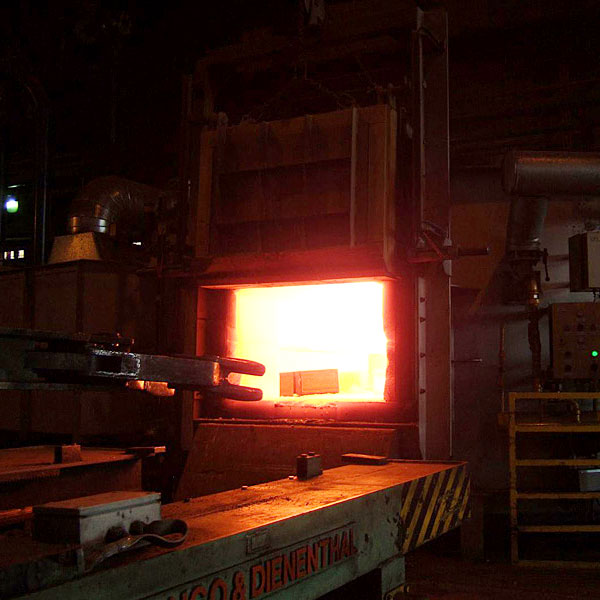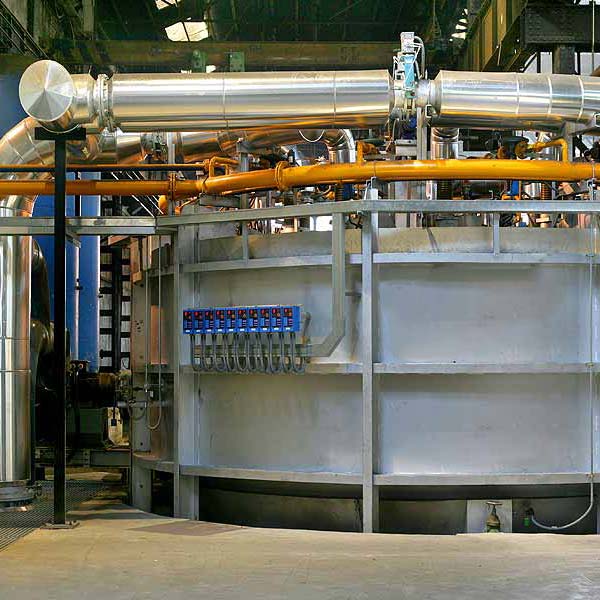Rotary Hearth Furnaces
A furnace for continuous processes on a small floor space
The rotary hearth kiln operates by rotating the hearth in a circular motion while applying heat from above. The heat can be generated through burners, electric heating elements, or other heat sources. The rotation of the hearth ensures that the materials are evenly exposed to the heat, which promotes uniform processing.
Charging and discharging can be done at a single position, either manually or automatically. The hearth rotates in customized segments that match the shape of the workpiece. The system or manual adjustments can control the speed and intervals of rotation.
These rotary hearth furnaces are designed to accommodate the required throughput and charge dimensions. They can be heated electrically or with powerful gas burners. Depending on the temperature range, the furnaces may or may not have air circulation.
The maximum temperature is 1300 °C. For temperatures above 850 °C up to 1300 °C, radiation heating is utilized. For temperatures up to 850 °C, powerful air circulation is employed to enhance heat transmission and ensure temperature uniformity in the low-temperature range. Electrically heated furnaces have wire heating elements or SiC rods in the ceiling. Gas-fired furnaces can be directly or indirectly heated, with the latter using a radiation tube to prevent direct contact between the charge and burner exhaust gases.
Compared to continuous furnaces, these rotary hearth furnaces have a compact design. They are intended for continuous operation at a single working temperature. The table diameter can reach up to 6000 mm. Forced convection and directly gas-fired furnaces have additional water sealing between the rotary table and housing. The table drive is located beneath the furnace and allows movement in defined segments or continuously. The rotary hearth has low-vibration movement, and charging is done through a lift door. The rotary drive can be activated using a foot pedal or external contact for automatic operation.


